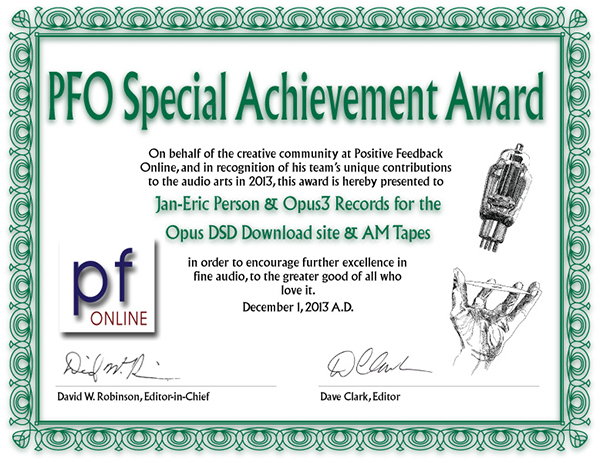|
DSD - simply the best
1-bit recording technology is not new to the pro audio
world. It was originally developed by Dr.Yoshio Yamasaki in the late 80’s at
Waseda University in Japan.
Dr. Yamasaki patented the 1-bit process in 1992 and has written history with his
research and development of 1-bit technology.
The technology was subsequently adopted and promoted by Sony and Phillips as
Direct Stream Digital (DSD) in their SACD configuration and these 1-bit SACD’s
have been commercially available since 1999.
What is DSD
audio?
For a number of reasons Sony and Phillips were highly protective of DSD until
about two years ago when they released the technology for general use. Since
this time there has been an almost explosive interest in DSD.
-Now, what is so good about DSD...!?
DSD was created to store MUSIC in the best possible way with the minimum of
losses.
It is the transient response that among other things is
directly dependent on the upper frequency limit of what the media can handle and
which also affects the “group delay time”, or expressed in a
more common way, the phase linearity. Here, DSD is superior to PCM (Pulse-code
modulation).
Of course everyone wants to have the best possible transient-response, but not
everyone understands its relevance and importance to music.
The transient test!
Many years ago, I
carried out a series of very interesting tests to show these effects.
I recorded on tape a Saxophone, a Clarinet and a Violin and cut away the first
part of the transient, i.e. the “attack” of the tone. When played back
no-one could identify the instruments!
Also, imagine you are walking in a forest with a friend
looking for mushrooms and your friend breaks a stick, you could detect
immediately, to an accuracy of +/- 1 degree, the direction from which
the sound is coming.
The first test is speaks for itself, while the other relating to direction of
the sound is important for the musical instrument’s location in the
stereo-picture, or sound stage!
Thus we are talking about the width and the depth.
These points were discussed and illustrated at Opus 3
records with Test Record 1, “Depth of Image” in 1979. It is
still one of the best parameters to judge a complete system.
An interesting comparison from Merging Technologies (Pyramax) of how Analogue,
DSD and PCM reproduce a transient!
As is generally known, the DSD bit-stream used for SACD is 2,8 Mhz, which is
excellent, but it can be even better! We are now talking about DSD 5,6
Mhz.
When comparing the two “formats” something magical happens!
The “Depth of image” gets even better, plus the localization of all of the
individual instruments is improved resulting in no discernible difference
between the Master Tape and the DSD copy.
However if the necessary information is not present on the
original recording there will be no difference.
All of Opus 3s strictly Analogue Recordings made until the year 2000
were made in different natural environments, such as Concert Halls, Churches,
Blues and Jazz Clubs, with all of the necessary “acoustic information” retained.
An important feature is the fact that all recordings are made with a single
Stereo-microphone in the Blumlein configuration, i.e. in crossed figure of
eights, which is one of the best methods of ensuring the capture of all of the
necessary acoustic information.
One advantage is that both left and right channels are captured at the
same instant, which is the best and most truthful way to capture the
transients in the “cleanest” way.
The result is that when I convert DSD 5,6 directly from our Master Tapes, there
is no difference other than the fact that different DSD dac’s sound different.
Is this not exactly what Dr. Yoshio Yamasaki wanted to achieve!?
Jan-Eric Persson
DSD Download
The first 3 complete Opus 3 albums
New! Two more complete albums!

|
